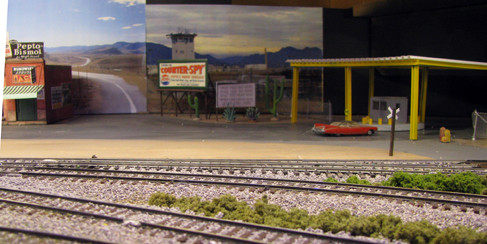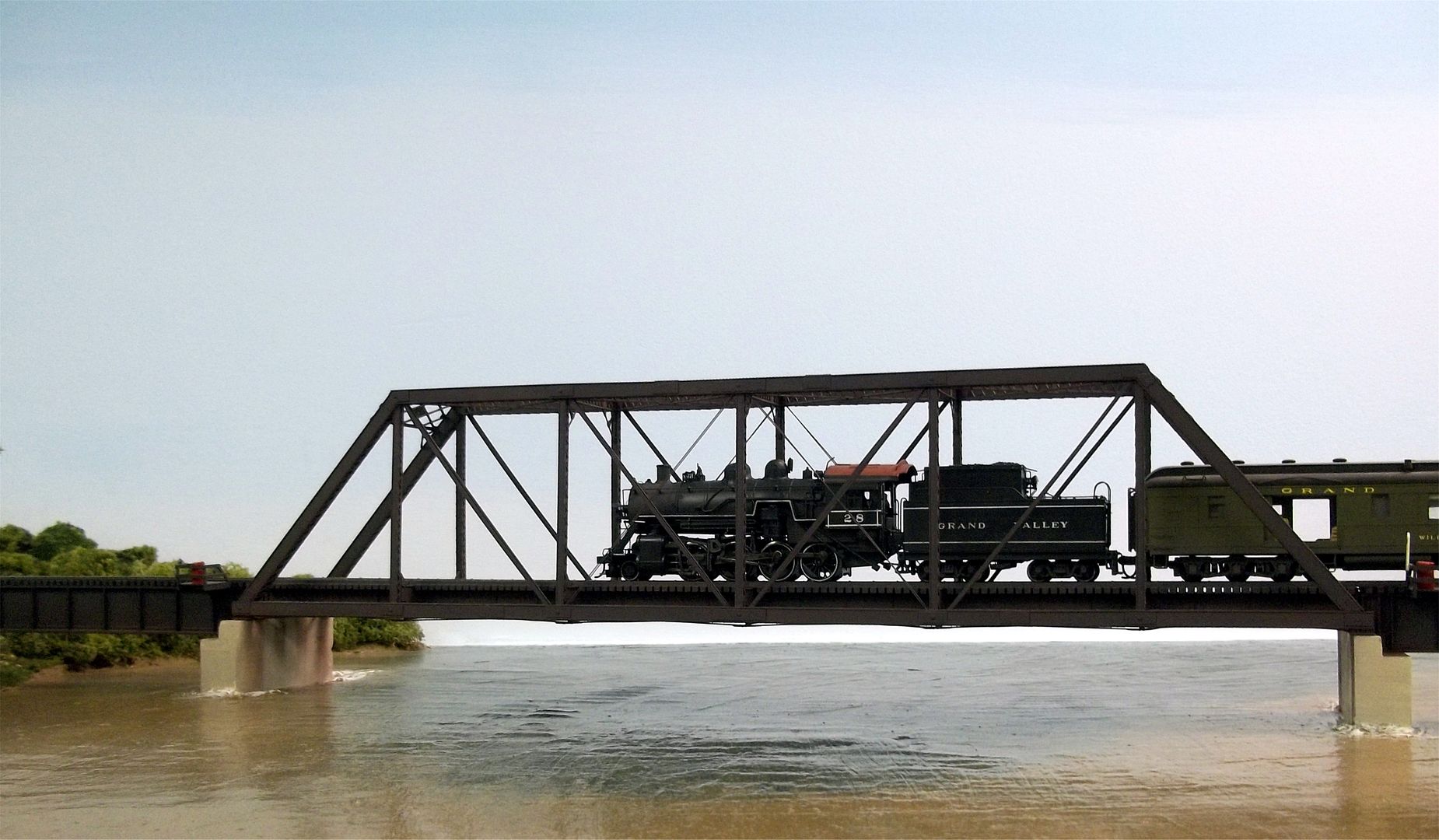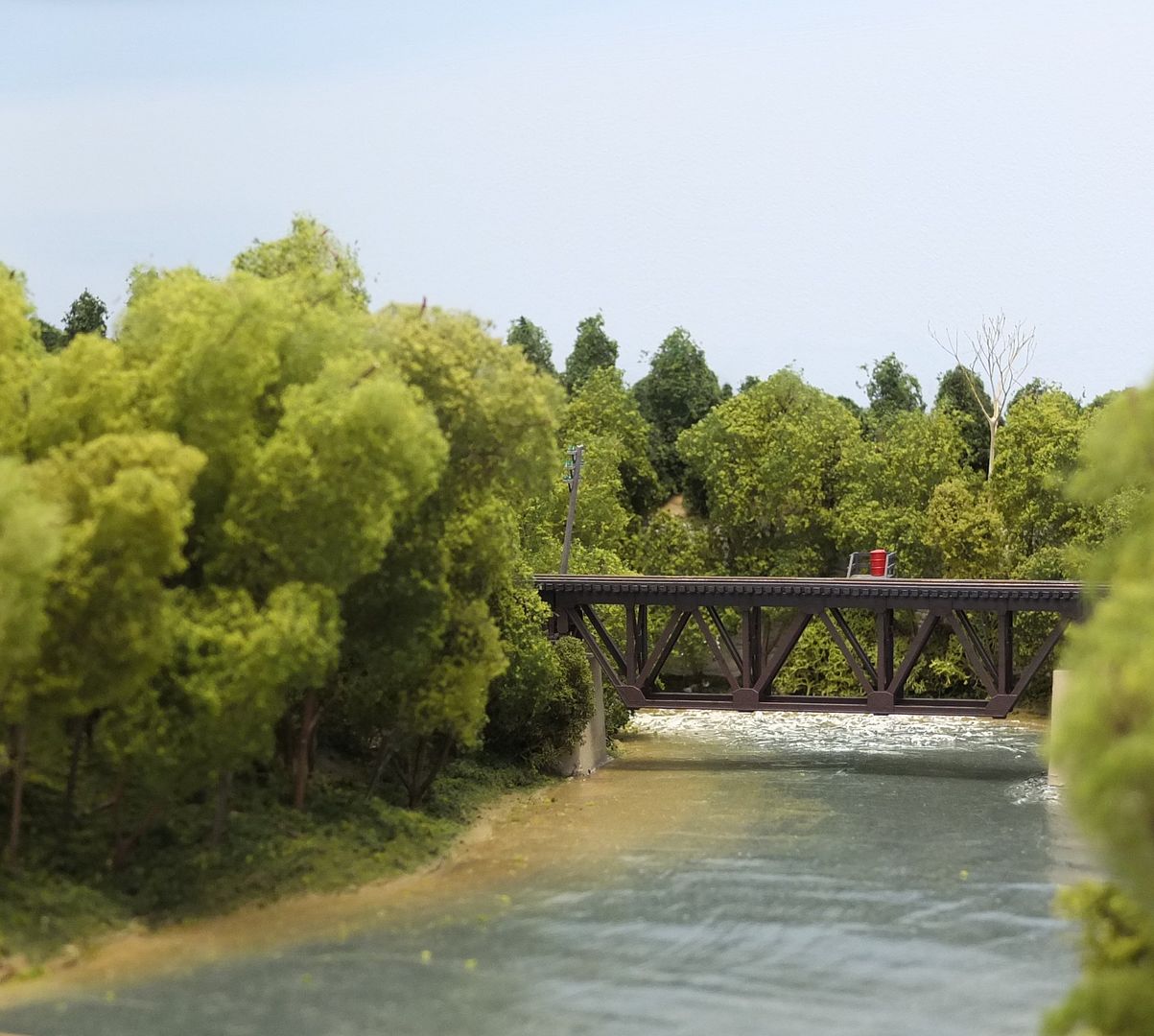Recently, I’ve seen some amazing use of photo backdrops but all on single level layouts at about eye-level and on the uppper deck of double-deck layouts. Is it worth the trouble on the lower deck, well below eye-level?
Victor A. Baird
Recently, I’ve seen some amazing use of photo backdrops but all on single level layouts at about eye-level and on the uppper deck of double-deck layouts. Is it worth the trouble on the lower deck, well below eye-level?
Victor A. Baird
Well, you might not always see it unless you lean down, or operate the lower deck by sitting in a chair, but if you put a camera down there to take pictures, it sure will show up.
–Randy
I remember being told that the best arrangement for a double deck layout should allow for standing operation of the upper level and seated operation of the lower level, assuming that the rails on each level are relatively grade free. Using that standard, the lower level should be treated exactly like the upper level when it comes to landforms and backgrounds.
If you have a situation like mine, where most of the rails are on grades and no two towns are the same height off the floor the situation can get ‘interesting.’ My answer, for the most part, carries the landforms well above eye level, where bluish white paint (on walls and ceiling) stands in for the hazy overcast of a humid late-summer day. Backdrop? What backdrop?
Chuck (Modeling Central Japan - where the scenery stands on edge - in September, 1964)
My “lower deck” is pretty deep in one area, as it’s actually just a transition in my no-lix from open to hidden track back to staging. I use just a couple of small backdrops in spots that could benefit, otherwise I use black landscape cloth to provide a finished look (this is a low angle shot, as the wires are generally concealed from a normal viewing angle.

Here’s an example where the backdrop, a road leading away from town, across gently rising terrain, helps add depth.

A little further to the right from the last pic, a view into the weapons depot.

Most of the time, like all good backdrops, they sort of fade into the background, letting the trains have the foreground.

If one can see it, it could be worthwhile. But you will want to consider horizon lines and the angle from which viewers will be looking. Every “stock” photo backdrop may not work well once you consider the viewing angle – if you are looking down on the rooftops of modeled buildings but the backdrop shows buildings face-on, that may be harder to blend the two.
Byron’s point on the importance of perspective is good one.
I did the best I could with some quick grabs off the internet for the specific locations and angles here, but have the files and eventually plan to replace the rising road vignette with a continuous print. Mine were all printed on single sheet paper, although that one to the left of the gate could certainly be improved with a trip to Kinkos for a small bit of large format printing. They’re not very big, because they couldn’t be, but the forced perspective tends to hold up because the viewing angle is so constrained.
The buildings visible inside the depot through the fence were targeted to achieve an angle that suggested more depth behind them, as the spurs into the plant angle in the general direction, too, although there’s nothing in terms of structures/scenery back there because it couldn’t be seen as it disappears arounda curve. Which is actually an advantage when trying to represent a place that keeps its secrets well.[X-)]
The whole area was basically created as an unplanned bonus when more/better staging became available elsewhere, so it was one of those work with what you have situations, rather than starting as a plan, or more deck separation would have been built in.
I only recently began adding a long-planned second level to part of my layout. While most of that area will require a backdrop, most of the lower level and the single level need none other than the sky-painted walls - urban areas have enough tall buildings to block the view:

…while about 3/4 of the lower level is on the north shore of Lake Erie, and generally on ground high enough to block the view of the lake:



…and, where the lake is visible, there’s not really much to see:

Other areas have enough three-dimensional backdrop to obviate the need for any further backdrop:

This area on the lower level will get some building flats (in progress), but I’ll also add a painted-on backdrop on the wall - probably just some rolling hills, with not much detail:

The upper level is currently a blank canvas (walls and layout), but most of it will get a painted backdrop of some sort. While photo backdrops can be v
This is where I found Google really helpful. I would search on likely terms to come up with the subject matter I was looking for, then click on Images under the results. Gives you a LOT of pics all together. This makes for easy comparisons, gives you a lot of choice in viewing angles, and usually can provide an image with high enough quality to use as a backdrop. If the quality isn’t there, you can usually narrow the search to find alternatives that are better quality.
Thanks for the replies folks. I guess I’ll paint the backdrop blue for now and add the backdrop later.
Victor A. Baird
Victor,
In that case, here’s another thing that may be useful. Being there are often supports, the wall, and other stuff you’re trying to hide down there, I also found attaching my printed backdrop materials to a piece of black foamcore board made them easy to handle and removable.
My lower deck was probably more impromptu than most, so it has some defects a well-designed multideck would probably not have. Thus I chose to treat it, as limited as it is, as a shadow box. This also blended well with using black landscape cloth for skirting under the fascia.
If you’re going with blue, then probably going to be a brighter treatment and white foam core could be painted blue and similarly be embellished with printed materials. It’s really so easy to do with a color printer it’s worth a shot before you spend the big bucks on a commerically printed backdrop. Npthing against one of those, because I’d sure do that on an upper deck with a better viewing angle for me, since I’m over six foot. And I only had about 11" of separation at most, so anything too fancy back there would likely not be noticed anyway.